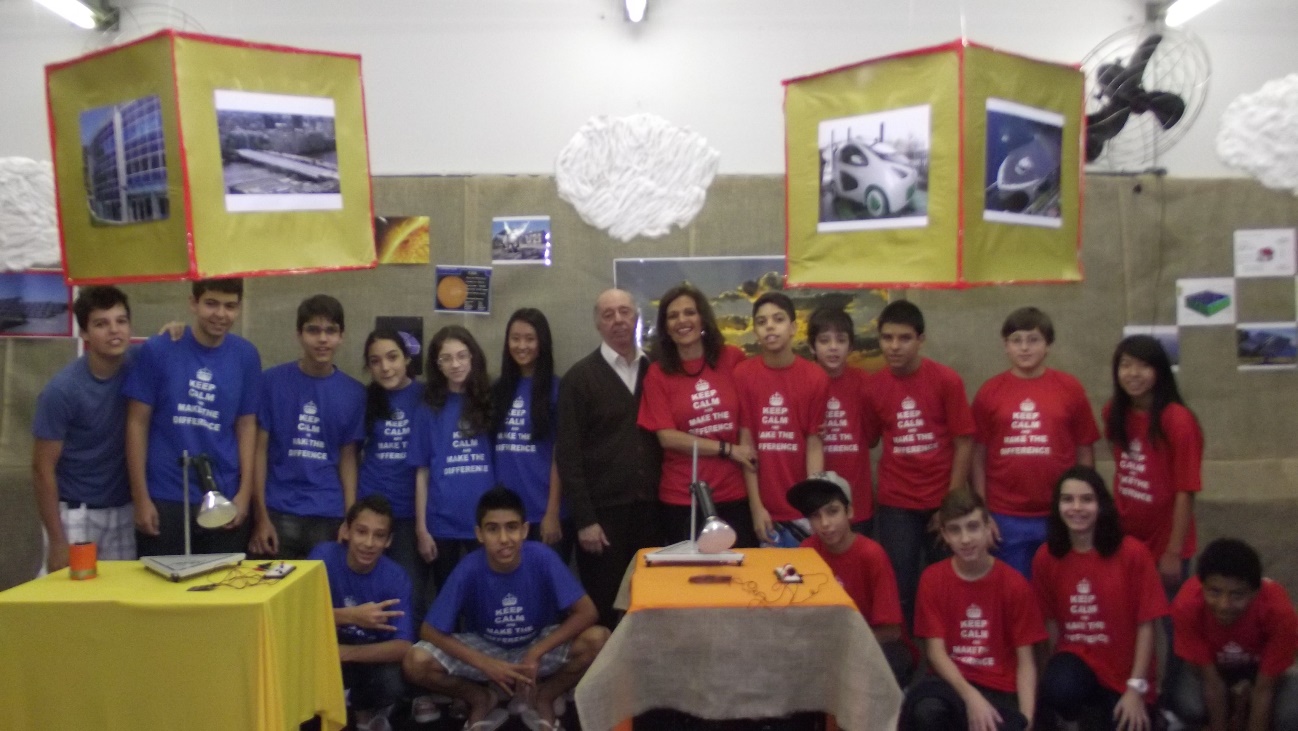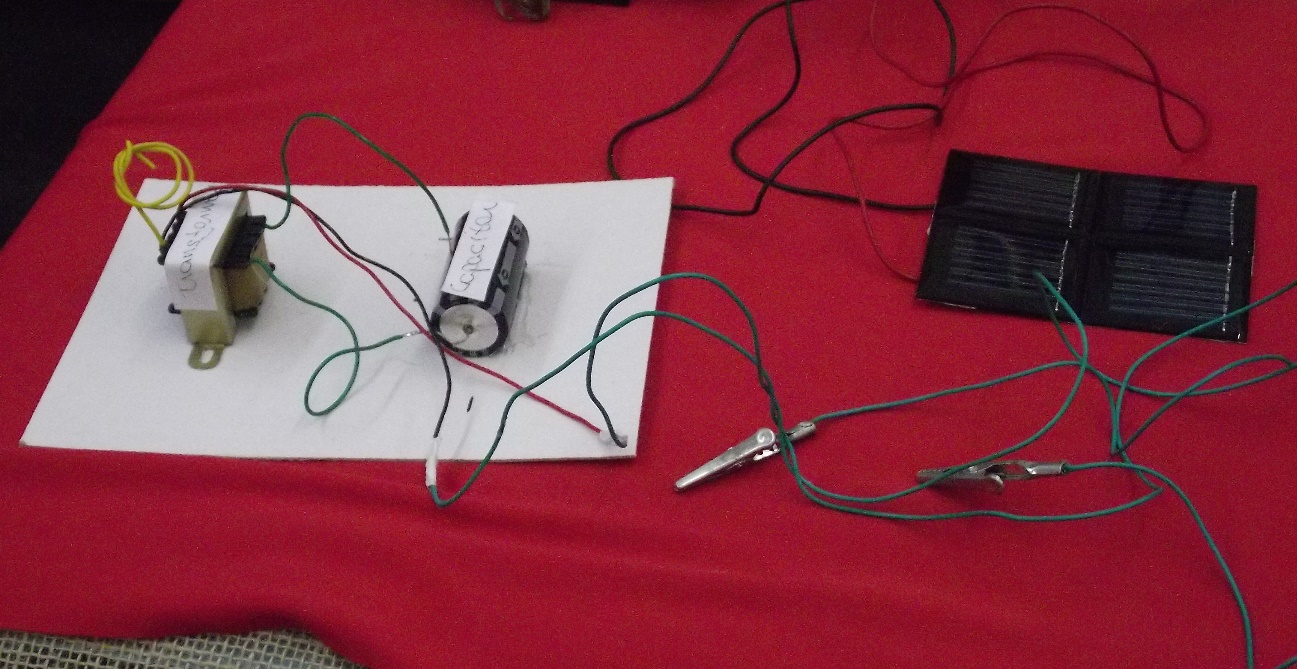The basic idea is to add technology and physics simultaneously to a very attractive work, awakening the taste and vocation of students and visitors of any science fair demonstration stand.
In the photo below, we have the event at Colégio Mater Amabilis (Guarulhos – SP) with the author, Professor Ekaterini Karnakis, Professor Maria Helena Carvalhais and students from the 8th and 9th grades of elementary school.

The Project
The central idea of the project was "Solar Energy", in which students presented solar cells (photovoltaic) in electricity generation, powering various devices such as a small radio, an oscillator and a motor with a mobile that we also show on this site (Video 219 from Youtube – Solar Cyclist and NOT146). It became the attraction of the demonstration stand, with many visitors attending it multiple times.
As it was announced, the "Solar Electric Shock" explained how to convert light (solar energy) into electricity. Going further, it was shown that it was possible to store the generated electricity in a device denominated capacitor.
Also, as part of the demonstration, it was explained that the stored energy was in the form of a low voltage but that it was possible to convert it into high voltage using another device denominated transformer.
Finally, the energy converted into high voltage could give a "nice" (but harmless) electric shock, actually demonstrated.
The visitor was invited to hold the transformer wires. The capacitor was discharged into the transformer's low voltage winding, producing a short high voltage pulse in the other winding and thus giving an electric shock.
The shock was short and not dangerous (of course, ask if the visitor has a pacemaker – if so, don't play the game!).
Once discharged, the capacitor needed to be charged again. See the procedure below.
Parts and Assembly
In Photo 2, we have the parts for the "Solar Electric Shock" experiment.
We use the following parts:
Two or four small ordinary solar cells connected in series.
One capacitor of 1,500 uF to 4,700 uF x 6 V or more.
One transformer of 110V (or 220V - see note) x 5 V or 6 V with a maximum current from 50 mA to 200 mA.
Two alligator claws.
Wires.
Additional: A bright table lamp (lampshade) if the demonstration is carried out indoors.
In Figure 3, we have the circuit designed for the demonstration.
You can test the circuit by making it light an LED, as shown in Figure 4.
You can also test the circuit by connecting a small fluorescent lamp to the wires that give the electric shock (they should have their ends peeled). When discharging the capacitor, the light blinks.
Demonstration Procedure
Assemble the arrangement shown in the second photo of the article and as per the diagram.
Light the photocells with the capacitor attached to them. Note the polarity in the connection. Leave it charging in this way for at least two minutes. (If the electric shock is too weak, increase the charging time.)
If you have a multimeter, you can use it to monitor the voltage.
Once charged, disconnect the photocells and have someone hold the high voltage terminals of the transformer (primary). Discharge the capacitor by touching its terminals to the transformer's low voltage winding wires.
A snap should occur, and the person holding the wires gets a small electric shock.
Connect a neon light or a small fluorescent lamp to the wires if you don't want to risk the electric shock.
Use this procedure for the demonstration.
If you want to electric shock a group of people, make them form a circle, and those at the ends hold the wires, as shown in Figure 5.
Contrary to what you might think, it's not the people at the ends who take the most significant electric shock, thus showing an important property (demonstrated in course lessons) that the electric current intensity is the same at all points of a closed circuit.
The work - Cross-Cutting Themes
Alternative energy sources, non-polluting sources, solar energy are essential topics for discussion in the classroom and to motivate work.
In this project, we use solar energy to elaborate on a written article (report) that can be performed at different levels.
For elementary school:
- Research the use of solar energy.
- Explain how solar panels work.
- Deal with other alternative sources.
For high school:
- Analyze the operation of solar panels.
- Calculate the energy stored in the capacitor.
- Explain the operation of the transformer.
- Deal with alternative sources and smart grid and energy farms.
For higher education:
- Analyze photocells performance.
- Calculate the energy stored in the capacitor and the discharge time to a consuming load.
- Analyze the possibility of using energy stored in supercapacitors.
- Analyze the use of alternative sourcing processes in smart grids and energy farms.







